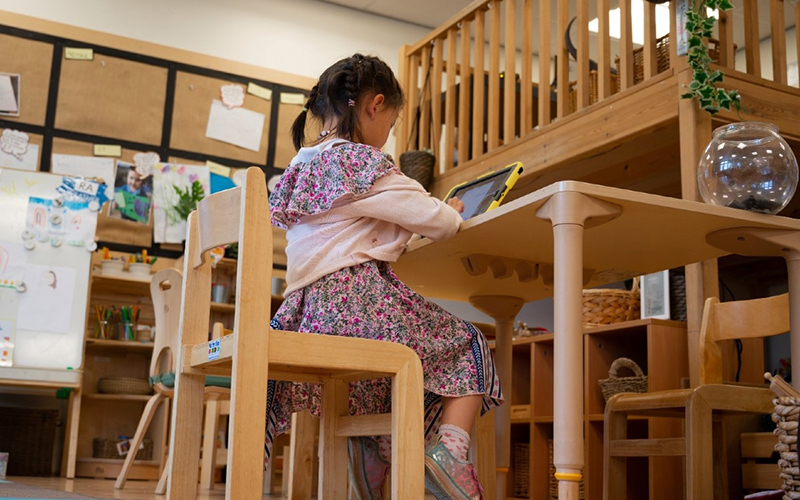Blending education and technology to help schools through the pandemic
Here are five key areas where EdTech solutions can help countries transition their short-term education solutions to the medium and long-term.
The Covid-19 pandemic is forcing governments around the world to find innovative and practical approaches to improve teaching and learning. An unprecedented surge in online learning provides opportunities to reimagine new ways teaching and learning. But the big question is: what are the best ways to do it?
Throughout Asia and the Pacific, educators are grappling with how to better use technology in the classroom during and after the pandemic. |
The pandemic has exacerbated the existing learning crisis for low-income and middle-income countries in Asia and the Pacific and this will likely translate into loss in lifetime opportunities and earnings. Prior to the outbreak, physical access wasn’t a key contributing factor to the learning crisis; rather, children were not learning despite going to school. The pandemic has amplified concerns of access as well as poor learning. Basic literacy and numeracy skills of the next generation in these countries are likely to decline unless there is immediate and meaningful intervention.
Due to massive school closures, there is a huge interest in distance learning and solutions using EdTech, which is use of technology and digital innovations to improve teaching and learning. How can countries link short-term solutions to challenges triggered by the pandemic with their medium and long-term education objectives?
There are five key areas where EdTech solutions might help countries make this link: government policies; infrastructure; schools and teachers; parents and students; and private EdTech providers. In order for EdTech to be equitable, enduring, and efficient, these five areas should work in tandem during the pandemic response, recovery and rejuvenation phases.
The response phase in most countries is best suited for low-tech solutions that provide distance learning to students without internet access at home while schools are still closed. According to UNESCO, more than 75% of households in most countries have access to either a television or radio, so these are a quick and efficient way to broadcast lessons and continue schooling. To support possible interactions between teachers and students, students can be given SMS or social media-based instructions and printed learning materials to accompany the broadcasting services. Without requiring heavy technical infrastructure, this phase serves as a practical short-term solution before schools reopen.
The recovery phase offers a medium-tech solution for students with mobile phones but with limited or low bandwidth Internet connections. These students will have better access to learning resources through a large variety of quality open educational resources made available by digital content providers such as Kolibri from Learning Equality and Khan Academy.
These open source platforms can provide underprivileged communities with 24/7 access to learning content with targeted guidance. Blended learning in this phase allows face-to-face teacher/student interactions when schools start to reopen with tighter health and attendance monitoring. Teacher training and teacher development can also be based on blended learning to fully utilize the best online learning resources in curriculum instruction and digital literacy to manage blended learning.
This could be complemented further in two ways. First, through technology upgrades in school management systems to integrate student/teacher health monitoring and upgrades in assessment systems to enable more effective blended learning throughout this phase, which may span two years. Second, it is equally important to promote apps to encourage parents, guardians and government to invest in devices and connectivity to keep children engaged in learning outside of schools.
Building on the above two phases, the long-term rejuvenation phase could lead to a high-tech solution that allows far more effective blended learning including live-streaming with interactive distance learning and the use of different smart devices and platforms for students and teachers. These can include systems for learning management, assessment, teacher support, school management, and parents and student support.
Tracking the progress of students through enhanced digitization - before, during and after classes - will help schools adapt and personalize the learning experience for students while improving their performance. This will require greater investments in digital infrastructure (e.g. high-speed internet in schools and homes), content and teacher preparedness to allow live streaming, virtual classes and immersive learning anywhere and anytime.
Each country’s situation is unique, and countries should plan their activities based on their specific needs, aligned to different phases of readiness.
Brajesh Panth is Chief, Education Sector Group, ADB.
Jeffrey Jian Xu is Senior Education Specialist – Education Technology, ADB.












